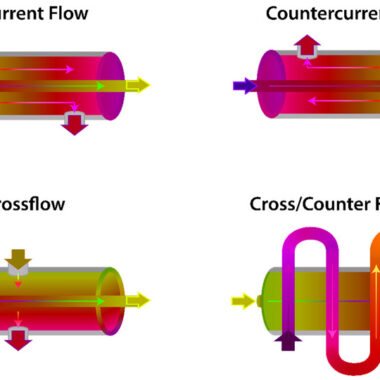Gaskets and Seals
Introduction
Gaskets and seals are critical components in countless industries, designed to create secure, leak-proof connections between surfaces, pipes, and equipment. These elements are especially important in systems that handle fluids or gases under varying pressures and temperatures, as they prevent leaks, contamination, and ensure safe and efficient operation. Made from a range of materials like rubber, graphite, metals, and composites, gaskets and seals are carefully chosen to match the unique demands of each application, from automotive engines to industrial heat exchangers. With advancements in material science and design, modern gaskets and seals are built for greater durability, chemical resistance, and temperature tolerance, allowing industries to meet stringent performance and safety standards.
- Material Compatibility: High temperatures demand materials that resist thermal degradation. Common choices include graphite, PTFE (polytetrafluoroethylene), and metal-reinforced gaskets, which can handle a wide range of temperatures and offer excellent chemical resistance.
- Temperature and Pressure Rating: Gaskets must withstand both the maximum operating temperature and pressure of the heat exchanger. Metal gaskets, like spiral-wound or corrugated metal, are commonly used because they can withstand higher temperatures and pressures than non-metallic options.
- Thermal Expansion and Compression: In high-temperature applications, thermal expansion can lead to deformation or leakage. Gaskets with the appropriate compression and flexibility, such as flexible graphite, can adapt to the changes in dimension and prevent leaks.
- Chemical Resistance: Gaskets should resist any corrosive substances used or produced within the heat exchanger. PTFE and graphite gaskets, for example, offer excellent resistance to chemicals and acids, making them ideal for use in high-corrosion environments.
- Sealing Surface Compatibility: The choice of gasket material should match the sealing surface of the heat exchanger to ensure a tight seal. For instance, softer gaskets like elastomers may work with smooth surfaces, while rougher surfaces might need more robust, metallic gaskets.
- Ease of Installation and Maintenance: High-temperature applications often require frequent maintenance, so selecting gaskets and seals that are easy to install and remove is beneficial. Spiral-wound gaskets are popular in industrial settings due to their easy installation and reliable performance.
- Safety and Compliance: In applications where high temperatures combine with hazardous fluids, using gaskets and seals that meet industry safety standards is essential. Materials should comply with standards like ASME, ANSI, and ISO to ensure operational safety and environmental compliance.
- Creep Resistance: At high temperatures, materials can experience “creep,” a tendency to deform under stress over time. Selecting gaskets with high creep resistance, such as those made from metal or reinforced graphite, helps maintain sealing integrity under prolonged thermal exposure.
- Oxidation Resistance: High temperatures can accelerate oxidation, especially in metal-based gaskets. Choosing oxidation-resistant materials, like Inconel or stainless steel, for metal gaskets can enhance durability in oxidative environments.
- Thermal Cycling Capability: For systems that experience frequent temperature fluctuations, selecting gaskets that withstand thermal cycling is essential. Flexible graphite and certain metal gaskets perform well under cycling conditions, as they can expand and contract without losing their sealing capabilities.
- Compression Recovery: Compression recovery refers to a gasket’s ability to return to its original shape after being compressed. This quality is essential in high-temperature environments where fluctuating pressures can impact gasket performance. Spiral-wound gaskets with resilient filler materials, such as graphite, are designed for high compression recovery.
- Anti-Galling Properties: In metal-to-metal sealing applications, galling (a form of wear caused by adhesion) can be a concern. Gaskets with anti-galling properties or anti-seize coatings, such as PTFE coatings on metallic gaskets, prevent wear and facilitate easy removal during maintenance.
- Permeability to Gas and Vapor: Some high-temperature processes involve gases or vapors, which can penetrate certain gasket materials over time. Choosing low-permeability materials, like reinforced graphite or metal gaskets, minimizes leaks and extends gasket life.
- Fire Safety and Non-Flammability: In high-temperature settings, it’s crucial to use non-flammable materials that meet fire safety standards. Flexible graphite and metal gaskets are often preferred because they are non-combustible and provide enhanced fire safety.
- Cost-Effectiveness: While high-performance gaskets can be expensive, considering the overall lifecycle cost is important. Durable gaskets may have a higher upfront cost but can reduce downtime and replacement frequency, making them more economical in high-temperature settings.
- Special Coatings for Extreme Conditions: Some gaskets feature special coatings, like PTFE or ceramic coatings, to improve chemical resistance, reduce friction, and enhance temperature tolerance, especially in extreme environments.
- Availability and Customization: For unique high-temperature applications, custom gaskets designed for specific shapes, thicknesses, and material properties may be necessary. Selecting a supplier with customization capabilities ensures that specific operational needs are met.
Conclusion
In industrial applications, gaskets and seals are indispensable for ensuring the safety, efficiency, and reliability of various systems. Their role in maintaining leak-proof connections under high pressure, extreme temperatures, and chemical exposure is critical to preventing costly downtimes, maintaining product integrity, and reducing environmental risks. As industries continue to demand higher performance and resilience, innovations in gasket and seal materials and design are enabling these components to perform better and last longer, even under challenging conditions. Selecting the right gasket and seal is not just a technical necessity but a strategic choice that directly impacts the safety and operational success of equipment across sectors.





